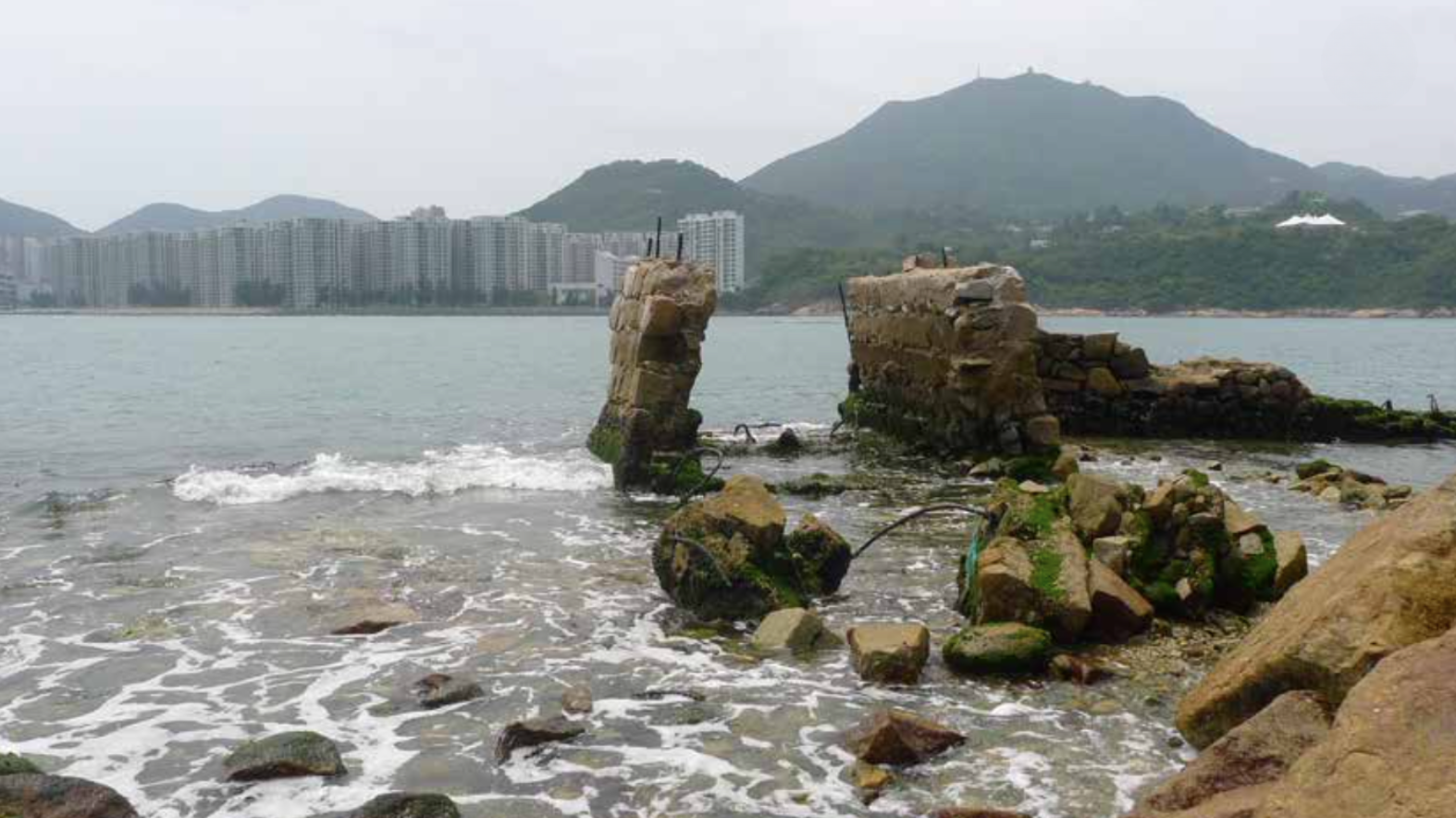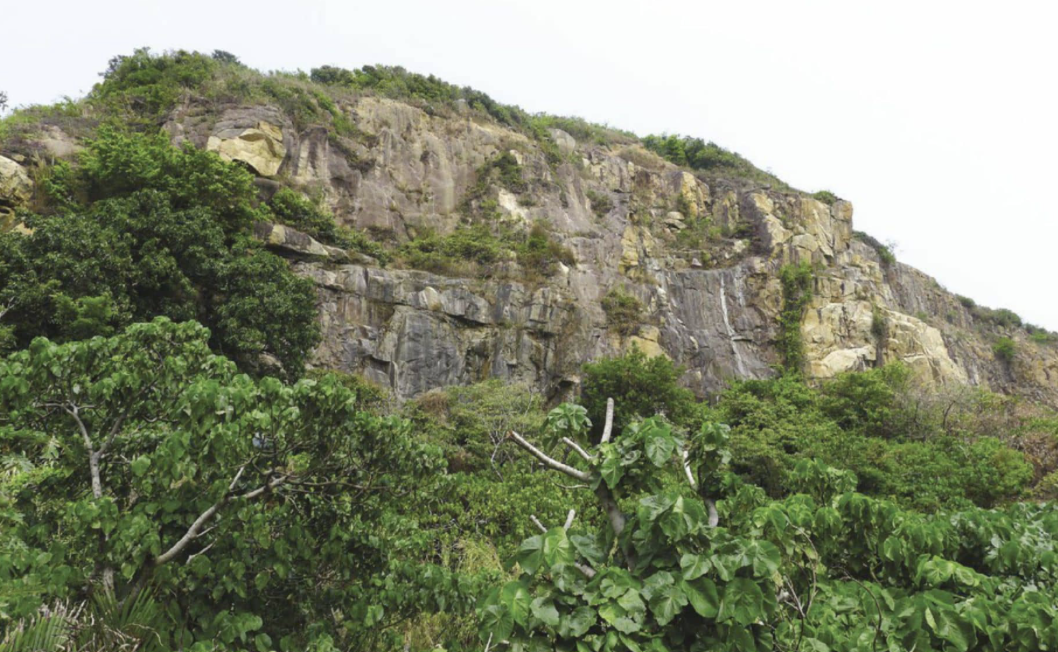Lei Yue Mun Quarry
The word “Detroit” brings to mind visions of a once-burgeoning factory economy. While not facing the same economic devastation as the largest city in Michigan, 1980s Hong Kong marked the end of many local industries. Stone quarrying was one of them, with eight quarries in the Kowloon Tong area closing as the government preferred purchasing more cost-effective materials from other countries. Visiting one of these abandoned quarries, it was remarkable to see the scale of this once powerful local industry.
The origins of Hong Kong quarries date to the end of the eighteenth century. The Hakka clans, who had settled into the Cha Kwo Ling area, were originally the main workers in the quarrying industry. Their skillful techniques and extensive knowledge of quarrying con- tributed to a thriving economy. They worked on quarrying sites around an area of Kowloon Tong known as “Four Hills”, representing the four villages of Cha Kwo Ling, Ngau Tau Kok, Sai Tso Wan and Lei Yue Mun.
From the 1840s, stone quarrying was a steady business, with granite used as the basic raw material for Hong Kong’s construction and building industries.
Of the four villages that were key in the stone quarrying industry, one of the most notable and well-preserved abandoned quarries is in Lei Yue Mun. At the industry’s peak, the Lei Yue Mun quarry employed one-eighth of the local population. Shortly following the end of WWII, approximately 20,000 new buildings were constructed in Hong Kong. These many and extensive construction projects required a total of several hundred thousand tons of raw material (in the form of stones gathered from these quarries). Excepting two government quarries, located in North Point and Yuen Long, all the city’s quarries were privately owned. Legally, private quarries held licenses that were valid for six to twelve months. In practice, there was no worry about the short periods, as the licenses were constantly renewed, and operators could stay on the same site indefinitely.
Producing several hundred tons of raw material daily, there was no shortage of workers for this dangerous, intensive manual labour. Besides physically lifting and moving heavy blocks of stone, quarry workers operated at dizzying heights. Technological advances in machinery meant that, by the nineteenth century, this difficult work was simplified as hand tools were traded in for drills and explosives.
Hong Kong’s geography made it a perfect site for gathering natural resources. The shorelines, which this port city has in abundance, are largely comprised of volcanic and igneous rocks, granite being one such variant. Millions of years went into the production of these igneous rocks, formed by the molten lava of volcanoes long gone.
Through the stone quarrying industry, these natural resources helped lay the foundations of great building projects within the city.
Two prime examples of local masonry still stand in the form of the Supreme Court building and the former Hong Kong and Shanghai Bank building. Over time, technical advancements in construction led to the heavy granite blocks being used as aggre- gates in concrete instead of standing alone.
As most quarries were in remote areas, workers tended to live on-site. At the quarry in Lei Yue Mun, temporary quarters of masonry and wood were constructed, one-storey approximately fifteen feet in height. Wooden planks supported by wooden frames, about two feet in height, served as beds and seats. The quarry operators provided workers with blankets and mosquito nets. Beds were slept in at night and during the afternoon. In the scorching summer months from Dragon Boat Festival to Mid-Autumn Festival, quarry workers could rest from 3 to 4 pm. If they were not interested in a nap, a fre- quently enjoyed pastime was gambling. Many of the gambling games played were Hakkan in origin – games such as 牛牌 (“bull brand”), 十五糊 (“fifteen paste”) and 釣魚 (“fishing”).
A combination of decreasing demand and the difficulties quarries faced with the government’s temporary ban on operating explosives (set in 1967) led to the shuttering of second-generation quarries built between the 1940s and 1950s, of which Lei Yue Mun was one. The industry struggled to meet the supply demand in 1963 and 1964 and took a nosedive when aggregate demand suddenly declined. By 1974, the last permit quarry closed, with government plans to slowly phase out the remaining small operators and transform the most promising sites into large-scale operations.
What remains of the old docking stations seems timeless in their world-weary state. Even the towers and low-lying buildings, set further into the site, appear mystical as their colours blend with surrounding boulders, the straight lines, flat rooftops, and sharp corners of their design the single giveaway. Across the water, the multi-level residential complexes of Shau Kei Wan seem too bizarre to the eyes when a ground covered in medium-sized boulders serve as the foreground. On the sides of walls and between the cracks of buildings, nature found a way, as it always does, with flowers, grass, and even trees growing on the sides.
Taking a respite, we sat on a boulder at the far end of the site. Here, the natural terrain gradually went downhill as the rocks returned to the sea. A black crab, terrified of the visitors, scuttled back and forth from the shadowy underbelly of a boulder, unsure if it was best to hide or flee. Old men took to their fishing rods, perched high on an old loading dock or perching on rocks close to the waves. Were it not for the Babylonian buildings across the water, we could have easily imagined ourselves transported to another time.
Originally published in CULTURE Magazine Issue 196 (April-May 2021)


